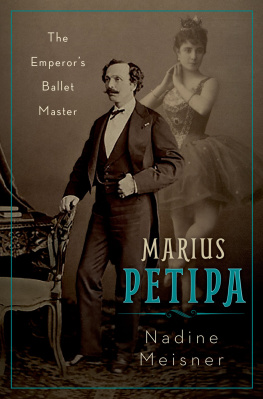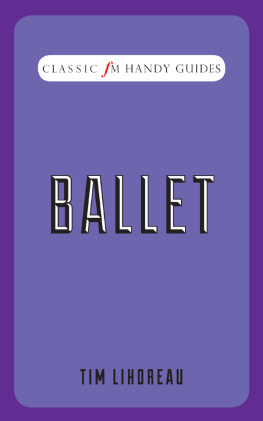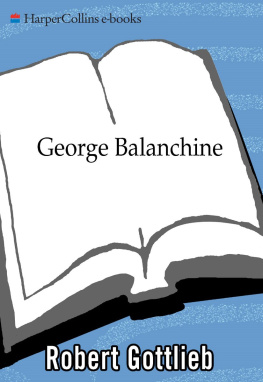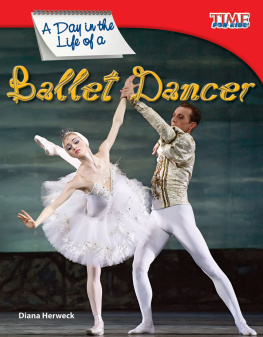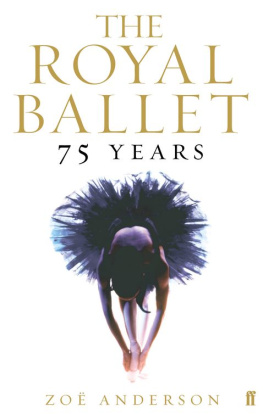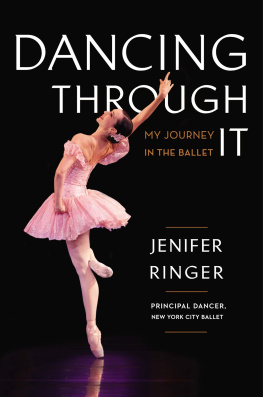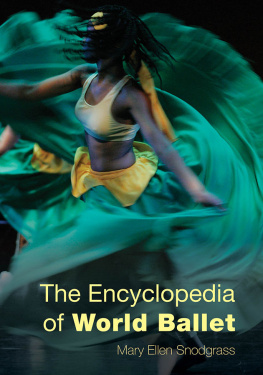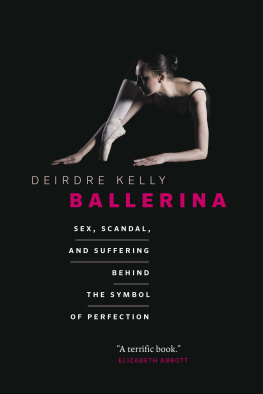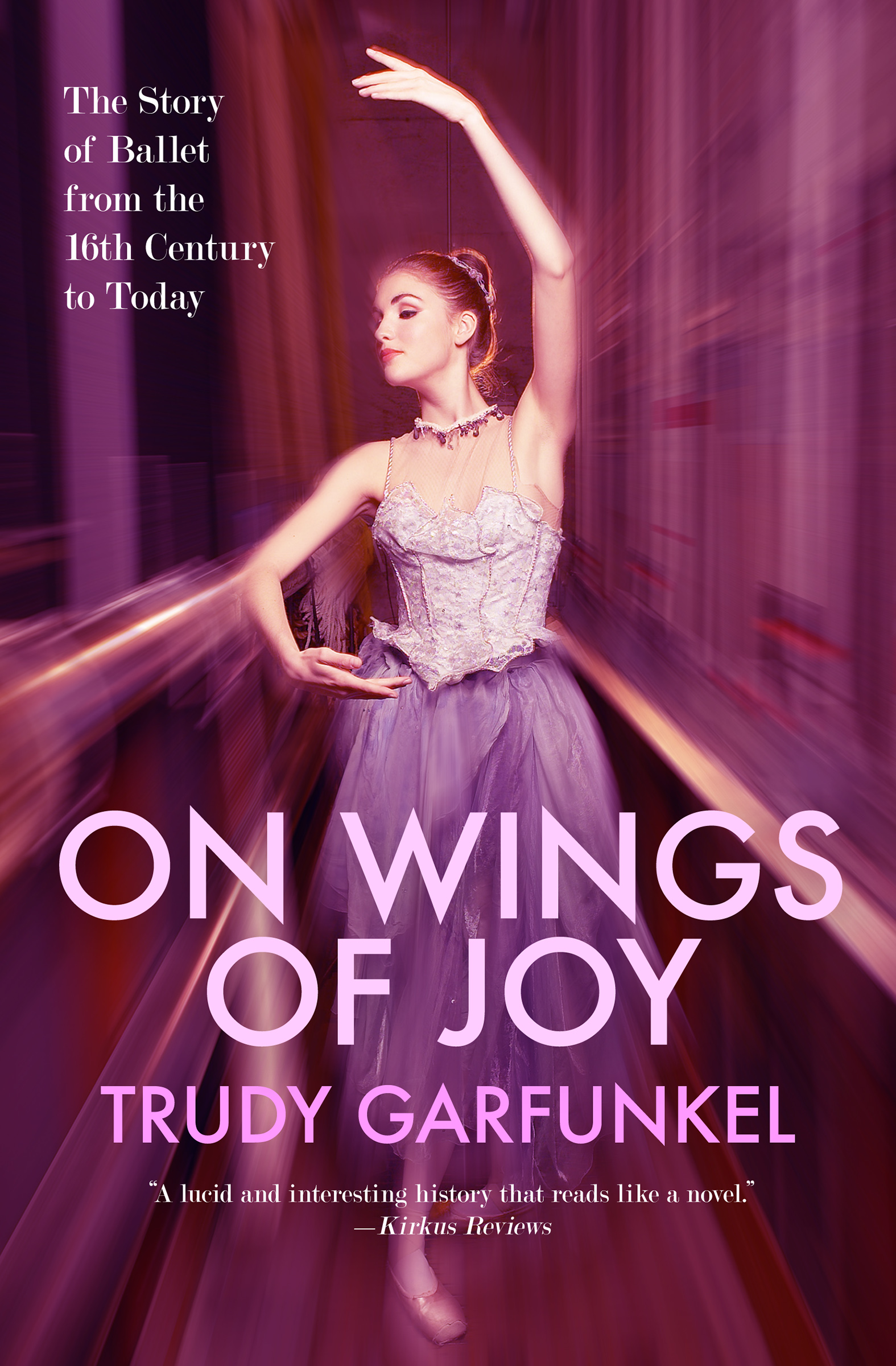On with the dance! Let joy beunconfined.
Contents
Part I:
The Origins of Ballet
Chapter 1
A Ballet Fit for a Queen
Chapter 2
A Dancing King Founds a Dancing School
Part II
The Eighteenth Century
Chapter 3
Some Modest Attempts at Change
Chapter 4
The Father of Modern Ballet and
His Followers
Part III
The Nineteenth Century
Chapter 5
The Revolution of Romanticism
Chapter 6
The Birth of Romantic Ballet
Chapter 7
Fairy Sprites and Fiery Beauties
Chapter 8
A Ballet Called Giselle
Chapter 9
A Choreographer from the North
Chapter 10
A Teacher from the South
Chapter 11
The Closing Years of the Romantic Era
Chapter 12
Servants of the Czar
Chapter 13
Petipa and the Flowering of Russian Ballet
Chapter 14
The Sleeping Beauty
Chapter 15
A Nutcracker Prince and a Swan Queen
Part IV
The Twentieth Century
Chapter 16
The Rebel
Chapter 17
The Impresario
Chapter 18
Astonish Me!
Chapter 19
A New Protg and an Old Ballet
Chapter 20
After the War
Chapter 21
The Immortal Pavlova
Chapter 22
Enter Balanchine
Chapter 23
The 1930s
Chapter 24
Ballet in England
Chapter 25
Englands Radiant Princess and Russias Leaping Lion
Chapter 26
Ballet in America:
Chapter 27
But First a School
Chapter 28
Ballet to Broadway and Back Again
Chapter 29
And Now a Home
Chapter 30
A Dance Explosion
Chapter 31
Responsive to Our Times
Chapter 32
The Eighties, Nineties and Beyond
Acknowledgments
The Dance Collection of the New York Public Library is an invaluable research resource; I would like to thank the librarians and staff for their help.
Prologue
Ballet is a universe of the imagination, a place of magic and enchantment, beauty and romance. Its many worlds vibrate with graceful dancers, glorious music, and sumptuous costumes. There are ballets that can make you cry, make you laugh, or send shivers up and down your spine. There are others that celebrate the pure joy of movement and the streamlined energy and excitement of contemporary life. In the universe of ballet dwell Swan Queens and Fauns, Don Quixote and the Sleeping Beauty. You can travel from a village fair in old Russia to a rodeo in the American West, from a fantastic toy shop where dolls come to life to a mysterious forest radiant with magic and moonbeams. Whether a ballet is old or new, however, it reflects a tradition that began more than four hundred years ago in Europe. Todays classical ballet dancers learn steps descended from the social dances of Renaissance lords and ladies, and the arts elegant style harks back to the aristocratic manners practiced at Versailles by the courtiers of Louis XIV, the Sun King.
Ballet is sight, sound, and motion, the theatrical form that can tell a story without words or convey moods and emotions through music and movement. On Wings of Joy will introduce you to its fascinating history: how it began, how the technical innovations and stylistic changes evolved, and what it is like today. You will learn about the basic positions and movements of ballet, about toe shoes and tutus, about contemporary dance companies and legendary ones that no longer exist. You will meet ballet superstars of the past and present, great choreographers and the ballets they created many of the people and events that have gone into making ballet the wondrous art that it is.
Part I:
The Origins of Ballet
Shake off your heavy trance!
And leap into a dance
Such as no mortals use to tread:
Fit only for Apollo
To play to, for the moon to lead,
And all the stars to follow!
Francis Beaumont
From The Masque of the Inner Temple
Overture
Dance may be the oldest art form. Drawings found on the walls of prehistoric caves show masked dancers imitating the movements of animals, possibly in the hope of taking on their strength or ensuring the success of the hunt. From very early times, dance has been used as a means of communication to tell stories and to entertain. It has also been considered to possess religious and magical properties. Primitive societies have often used dancing to celebrate the harvest or in rituals surrounding birth and death. Trained dancers entertained the Pharaohs, but the priests of ancient Egypt kept the steps of their temple dances a secret, so that their magical powers would be preserved.
The ancient Greeks used dance in their complex ceremonies and religious rites, because they believed that dancing brought the mind and body into perfect harmony. The philosopher Plato thought dancing so important that he wrote, to sing well and to dance well is to be well educated. Noble dances confer on the student not only health and agility and beauty, but also goodness of soul and a well-balanced mind. The festivals honoring the Greek god of wine, Dionysus, featured wild and spirited dancing, as did the plays that were presented at the foot of the Acropolis during these annual spring rites. Originally these dramas were performed by a chorus, dancers who sang, chanted, and moved in rhythmic patterns; later, playwrights added first one, then several actors to respond to the chorus and act out dramatic episodes.
The stage for the plays was known as the orchestra, or dancing place, a large, flat circular area that was a feature of Greek theaters. Although only men could be actors and members of the chorus, the patron of dance, the Muse Terpsichore, was a goddess. She was one of nine sisters, all daughters of Zeus, each of whom presided over a different art or science.
Across Europe in the Middle Ages (c. A.D. 500-1300), the Catholic Church associated dance with pagan rituals and considered it the work of the devil. The church did not use dancing as part of its religious services. People at that time, however, used village festivals, such as May Day or weddings, as occasions for celebratory dancing, and communal dancing was often used for courtship as well. Medieval knights and their ladies learned more refined versions of these boisterous folk dances from the minstrels and troubadours who visited the castles of Europe bringing news and entertainment as well as the latest dance steps.
During the Renaissance (c. A. D. 1300-1600), culture and the arts including dance flourished throughout Europe. For the entertainment of the common folk, traveling pageants, featuring singers and dancers, went from town to town in highly decorated carts or floats. But it was the lavish theatrical entertainments and courtly dance forms viewed and practiced by the aristocracy during this era that were to provide the first glimmers of what would later become ballet.
At court banquets, the nobility was entertained by disguised players and dancers called mummers. By the end of the fifteenth century, these feasts often included a series of interludes called entres, or entries dancing, singing, poetry, pantomime, and special mechanical effects presented between the courses of the meal. Special effects included clouds that descended from the heavens and changed color; revolving stages created scene changes. The singers and dancers were usually costumed as the gods and goddesses of Greek and Roman mythology.


